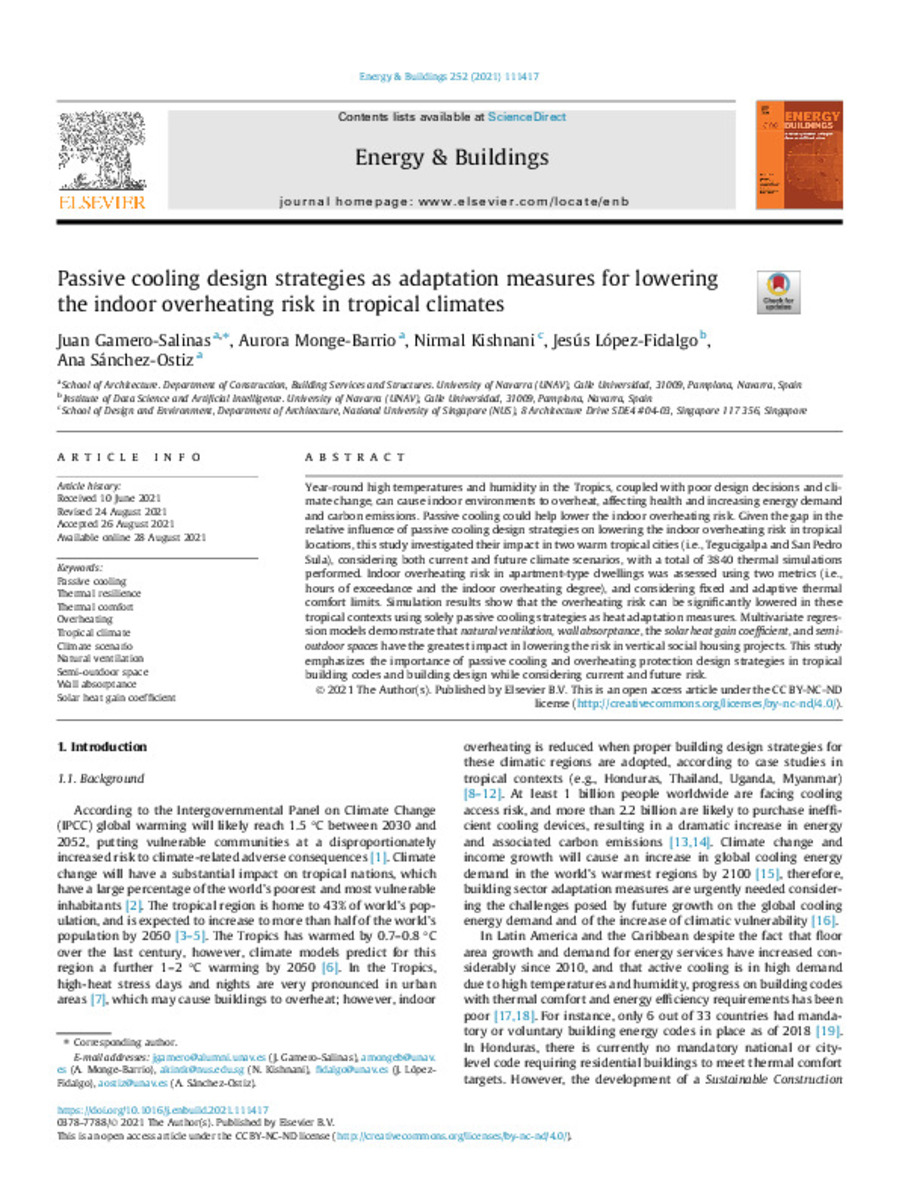Passive cooling design strategies as adaptation measures for lowering the indoor overheating risk in tropical climates
Keywords:
Passive cooling
Thermal resilience
Thermal comfort
Overheating
Tropical climate
Climate scenario
Natural ventilation
Semi-outdoor space
Wall absorptance
Solar heat gain coefficient
Note:
This is an open access article under the CC BY-NC-ND license
Citation:
Gamero-Salinas, J. (Juan); Monge-Barrio, A. (Aurora); Kishnani, N. (Nirmal); et al. "Passive cooling design strategies as adaptation measures for lowering the indoor overheating risk in tropical climates". Energy and Buildings. 252 (111417), 2021,
Statistics and impact
0 citas en

Items in Dadun are protected by copyright, with all rights reserved, unless otherwise indicated.










